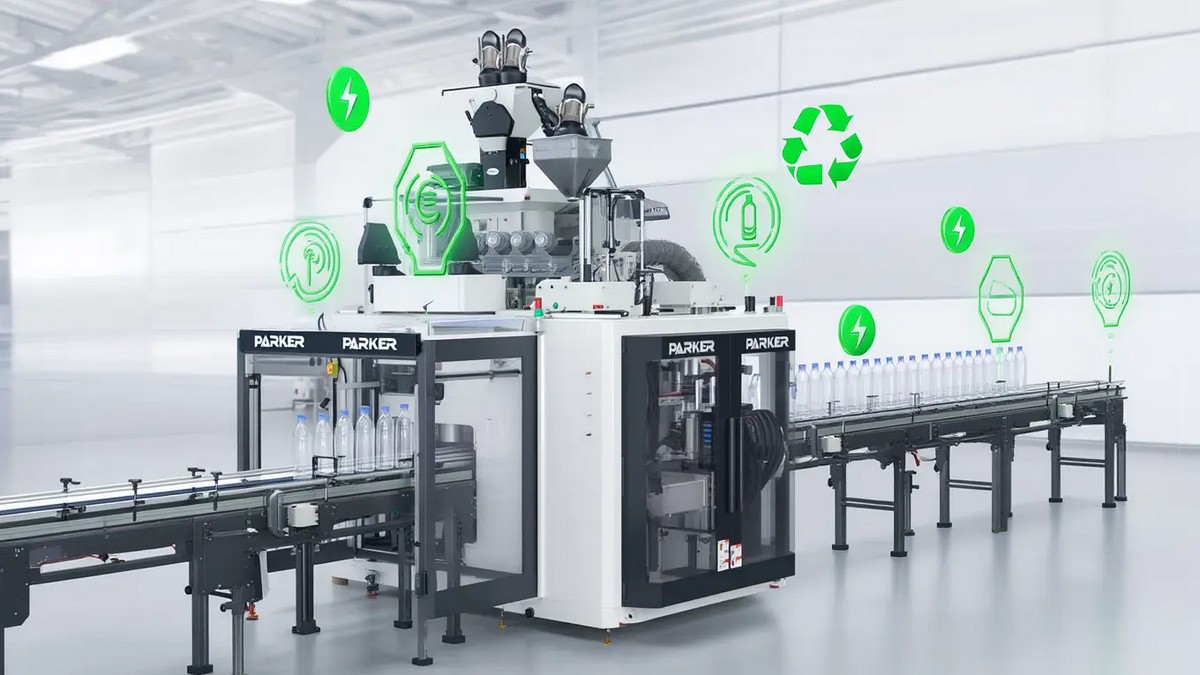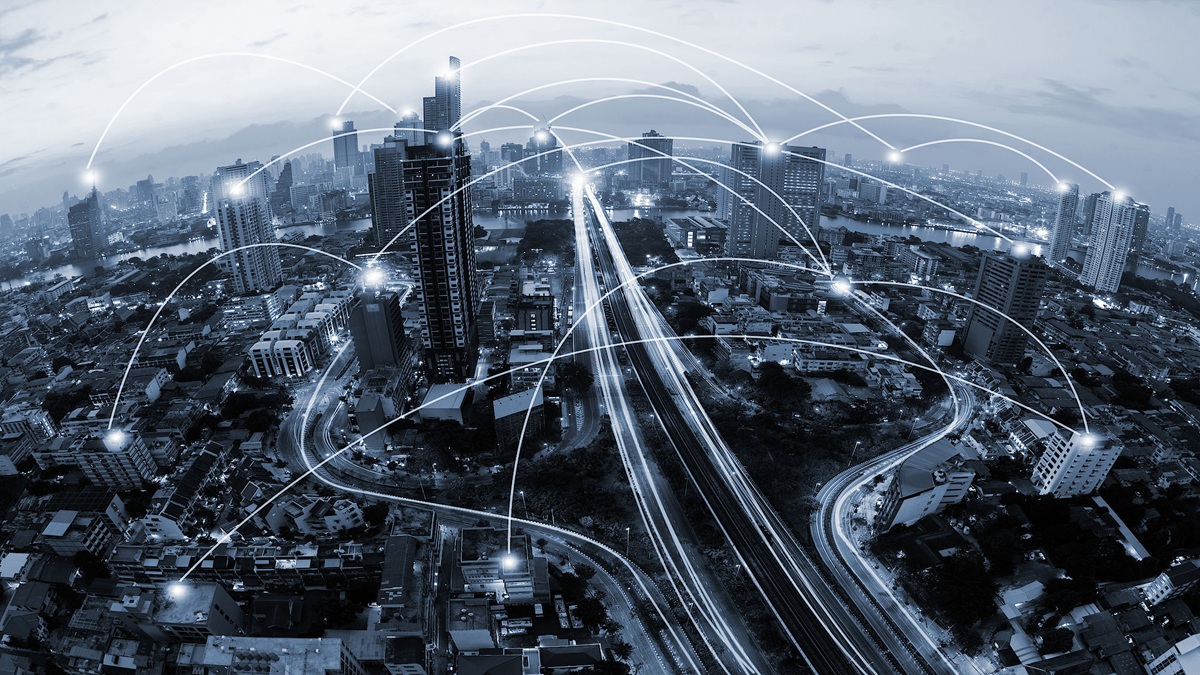Disruptive technology is overturning the digital transformation of the automotive supply chain. The recent COVID-19 epidemic has hit the global auto market. The demand for transformation within the industry has increased. The integration of technology applications and electric vehicles will become the future development trend.
The "Automotive Industry Trends and Prospects for 2020" report puts forward the four major driving factors of "Electrification, New Competitors, Information Sharing and Technology", which can help the auto industry adapt to changes in the value chain and face the impact of international supply chains and new technologies. At times, it was able to flexibly adjust its operating model, promote internal transformation, and invest in cutting-edge core technologies to conform to industry trends.
It is estimated that highly-growing auto parts suppliers, such as automotive electronics technology companies, can generate more than three times the profit. By 2025, the number of cars equipped with electric power systems worldwide is estimated to reach 25-30 million. Facing the new coronavirus at this stage, the virus epidemic should start from the three aspects of "people, finance and material", paying attention to consumer demand, paying attention to financial risks, and strengthening upstream and downstream cooperation.
2020 auto industry trends and prospects
New technologies brought about by technologies such as autonomous driving, electric vehicles, and shared cars are bound to have a significant impact on the automotive industry, and this disruptive trend is accelerating the arrival of a turning point. Deloitte analyzes the current automotive supply market and points out the different current conditions of various auto parts suppliers. It is estimated that some suppliers may lose 20% of their profits in the next five to seven years, while other highly growing suppliers can create more than three times the revenue. Profit. In addition to the impact of product growth potential and manufacturers' product differentiation capabilities, management should establish a strategic plan to decide whether to maintain existing products or integrate various business units to achieve the effects of expanding scale and reducing costs.
-
The electrification of vehicles drives M&A and investment in the supply chain:
It is estimated that by 2025, the number of cars equipped with electric power systems worldwide is estimated to reach 25-30 million. According to the analysis of the Qinye Zhongxin report, the number of vehicles with various new power systems such as pure electric and plug-in hybrid power systems will grow by an average of 34% in 2025; The traditional internal combustion engine and internal combustion engine power system using idling stop technology are traditional the number of cars will decrease. In response to the electrification trend, some companies have begun to rectify their products and corporate structure; the growth and expansion of companies related to electrified power systems may also drive mergers and acquisitions among suppliers and increase investment by non-traditional players, or make traditional suppliers Strategic restructuring to profit in the market; The global epidemic has caused the temporary suspension of China's supply chain, and the auto-related industries will coordinate the scheduling between the supply chains to diversify the risk of parts production. In response to such short-term shocks, it will indirectly accelerate the industry's thinking about the possibility of electrification of automobiles.
-
The entry of new competitors will accelerate the transformation of the industry:
Many large technology and consumer electronics suppliers are entering the automotive market, challenging existing automakers and business models. New entrants have more abundant capital and technology, and continue to update technology and equipment through investment and asset purchases, making the original linear The value chain of the company has turned to network integration, and the automotive electronic systems of automobiles are connected with services provided by other industries to create an Internet of Vehicles ecosystem, which indirectly promotes the acceleration of transformation of traditional suppliers.
-
The new era of smart economy for car information sharing is coming:
Smart car services that take into account environmental protection and safety have become the focus of recent industry development. The use of real-time data analysis helps to create safety protection and achieve the purpose of improving efficiency and reducing costs. The Qinye Zhongxin report pointed out that blockchain technology is an important key to building a smart life. It connects the same standards, stores and shares Internet of Vehicles data, and uses real-time data to control self-driving car software. The car-sharing market is expected to continue to grow due to the convenience and immediacy brought by the increase in urban population and the popularization of 5G networks and smart phones. The real-time data sharing is conducive to the efficiency and safety of car pickup, real-time query of the location of empty cars, and tracking and management of vehicle usage.
-
Technology reverses the focus of industrial development and "soft power" will become the key:
The development of automobile technology and changes in performance have driven the demand for electrification technology and related hardware and software equipment, reversing the traditional focus on automobile "hardware" and shifting to the two major development trends of "data and service". With the continuous advancement of technological integration, various industries will have new technological talents and skills requirements, and related manpower strategies will also change.
The next step for the auto industry in the face of the epidemic
The new coronavirus epidemic has blocked the supply chain of traditional automobiles. According to the analysis of the Deloitte China "Facing the epidemic, how the automobile industry can withstand risks" report, the current stage should start from the three aspects of "people, finance and material", focusing on consumer demand and creating more innovation. More contact points with consumers must also pay attention to financial risks and strengthen upstream and downstream cooperation to provide a more flexible supply chain. Finally, in response to the development trend emphasized by the report, digital technology will become one of the solutions to provide online marketing platforms or online car viewing services that are closer to consumer needs. The auto industry should take this opportunity to rethink how to improve the consumer experience, accelerate transformation, and enhance the cohesion of the auto industry.
Changes in the automotive industry chain
The automobile industry is in a period of product revolution and industrial transformation. As a result, there has been a gap in the previously closed automobile supply chain, providing non-traditional suppliers with excellent opportunities to enter the automobile market. The ICT industry chain that Taiwan excels at can step into it. The globalization of the epidemic has caused the suspension of China’s supply chain, and automobile-related industries may seek out manufacturing locations to diversify the risk of parts production. Accelerate the transformation of the automotive industry supply chain.
- The end market slows down: In 2018, the growth of the auto market slowed down, especially in the second half of the year. Due to the continuous trade offensive and defensive wars between major countries, global light vehicle testing standards on the road, and stricter environmental regulations, the vehicle industry is facing a huge impact.
- Potential competitors influence the automotive market: Players from large technology companies and other industries are investing heavily in the automotive industry, putting pressure on traditional automotive suppliers to innovate quickly; but for many traditional companies, many innovations require 3-5 years or more of product development cycle.
- New technologies converge in the automotive market: The maturity of the mass transportation network, the rise of car-sharing services, and the trade war are factors that hinder sales growth. The rise of the middle class in emerging markets has benefited sales growth.
End car market changes
- Relevant regulations and restrictions have reduced consumers' willingness to buy cars: Due to environmental considerations, energy restrictions, and traffic flow restrictions, relevant laws and regulations in various regions deliberately increase the cost of use of some vehicles, including parking costs and vehicle fuel costs. These measures are used to further improve management methods.
- Electric vehicles show the potential for mass production: Benefiting from the promotion of environmental protection policies, investment from well-known brands, and changes in consumer attitudes, the demand for electric vehicles (EV) in the Asia Pacific (AP) and European Union (EU) is increasing, but the low fuel prices in North America (NA) have made consumers "Keep away."
- Decreased willingness to pay for connected cars: Consumers have different attitudes towards enhancing the connectivity of cars. Although they are highly interested in time-saving features, they have concerns about privacy and data security. Original equipment manufacturers (OEMs) also face the difficulty of getting consumers to pay for connected cars.
There are many challenges in the travel revolution:
Facts have proved that overall consumer behavior is difficult to change. The future of shared travel may be pinned on young people who fully accept the tenets of digital life.
- Potential competitors influence the car market:
Competitors with potential threats may pose a threat to existing auto industry players; but ultimately it still depends on the degree of barriers to entering the industry and the degree of response of existing companies within the industry.
- Newly entered electronic parts factory:
According to a survey conducted by the Bureau of Industry of the Ministry of Economic Affairs, the output value of Taiwan's automotive electronics in 2017 is estimated to reach NT$208 billion, and by 2020 it can exceed NT$270 billion, which is close to the output value of Taiwan's complete vehicles.
- Cutting-edge software company:
According to Goldman Sachs' estimates, the global automotive V2X (Internet of Vehicles) market will be worth US$790 million in 2020 and will exceed US$32.4 billion in 2035. Competition from different industries has stimulated traditional automakers to focus more on transportation services other than the production of cars. Specific practices include direct investment in shared technology companies and cooperative development of self-driving cars or advanced technologies.
- Car rental company:
The continued US trade war, rising auto loan interest rates, reduction in preferential leasing programs, and the auto market boom have led to negative attacks, and sales have also shown a slight growth.
Technology fusion automotive industry-5G/AR/VR smart mobility
- Navigation AR assistance: Through 5G high-efficiency communication, it provides the driver with AR-assisted real-time accurate navigation on road conditions, reducing navigation misjudgments.
- Smart transportation planning: Adjust the time of traffic lights according to the traffic volume statistics; plan entrances and exits, clear roads, and warn of congestion in advance.
- Autopilot: The low latency and high reliability of 5G can support all forms of vehicle-to-everything connection (V2X), realizing automatic vehicle driving.
- Remote driving: According to the road high-definition camera to return real-time images with low latency for indoor remote driving, it can provide a higher degree of freedom of travel services.
- Vehicle scheduling: According to the first vehicle, low-latency and high-reliability transmission of information to the following fleets, in the highway, tunnels, ports, etc., to achieve multi-task parallel.
- Car communication and entertainment: In response to the emerging of hardware technology and electronic systems, as well as the high-speed transmission of AI and 5G, the transformation and upgrading of communication and entertainment equipment-related automobile companies.
The future development direction of the automobile industry
The electrification of automobiles-the gradual transformation of the supply chain:
- Supply chain transformation and development of EV system
- Parts motorization/software
- Increased vehicle electrification ratio
- Non-traditional suppliers enter the market
Car sharing-real-time data analysis:
- Ensure market transparency
- The rise of new car insurance
- Car sharing
- Real-time data helps safety protection
Technology accelerates innovation-AI promotes the development of self-driving cars:
- AR/VR/5G auxiliary navigation system
- Assist in scheduling vehicles
- Control remote driving system
- Enhanced autonomous driving system
The Internet of Vehicles-technology integration technology is mature:
- 5G/AI integration into the automotive industry
- Promote mature applications of the Internet of Vehicles
- Improve mobile time efficiency
- Repay the transportation efficiency of the transportation system
- Assist management units to formulate strategies
Automotive electrification drives the transformation of the supply chain
- EV system has room for development: According to different power systems, electric vehicles can be subdivided into four categories: pure electric vehicles (BV), plug-in hybrid electric vehicles (PHV), hybrid electric vehicles (HV) and fuel cell electric vehicles (FCEV).
- Increased vehicle electrification ratio: According to Deloitte's global analysis, by 2025, the number of cars equipped with electric power systems worldwide is estimated to reach 25-30 million; the average number of vehicles including all new power systems such as pure electric and plug-in hybrid electric power systems will be Growth of 34%, while the number of vehicles with traditional internal combustion engine power systems will decrease.
- The electric vehicle market has potential: The responses of 25,000 people from 20 countries showed that consumers in China, Japan and the United States are becoming more and more interested in electric vehicles.
- International manufacturers have launched electric vehicles: As major international manufacturers such as Tesla, Nissan, GM, Renault, Hyundai, and non-traditional auto companies such as Delphi, they have launched pure electric vehicles with high endurance (200-400 kilometers) and low prices (US$25,000 to US$40,000). Coupled with policy subsidies from various countries, the global sales of electric vehicles (including pure electric vehicles and plug-in hybrid vehicles) have grown rapidly, from less than 400,000 vehicles in 2014 to officially exceeding 2 million vehicles in 2019.
Real-time data analysis has an increasing impact on the automotive industry
- Ensure market transparency: The system automatically calculates freight, tariffs, vehicle inspections and other costs as well as the time of delivery to port, purchase, delivery, customs declaration, tax payment, and vehicle inspections. It also cooperates with law firms, insurance companies, and banks. Ensure that the information of all parties is symmetrical.
- The rise of new car insurance: Collect various data of the owner and the vehicle, including driving time, period, speed, road section, mileage, driving behavior such as slamming the accelerator or braking, etc., and implement the calculation based on the driver's vehicle usage (Usage Based Insurance; UBI) The new type of car insurance not only allows drivers to pay fairer and more reasonable premiums, but also urges drivers to maintain good and safe driving habits.
- Car sharing: The blockchain uses the same standard to connect, store and share the data of the Internet of Vehicles → improve efficiency / reduce costs / environmental protection + safe smart car services.
- Real-time data helps safety protection: Blockchain creates a smart parking solution. The impact of real-time data functions on self-driving car software can speed up the speed and safety of users' car pick-up. It can also query the location of empty cars in real time, and pay for refueling directly through the cloud. It can also be easily tracked and managed. Who has used the vehicle and when it was used?
Artificial intelligence (AI) promotes the future development of self-driving cars
- Assist in scheduling vehicles: According to the first vehicle, low-latency and high-reliability transmission of information to the following fleets, in the highway, tunnels, ports, etc., to achieve multi-task parallel.
- AR/VR/5G auxiliary navigation system: Through 5G high-efficiency communication, it provides the driver with AR-assisted real-time accurate navigation on road conditions, reducing navigation misjudgments.
- Enhanced autonomous driving system: The low latency and high reliability of 5G can support all forms of vehicle-to-everything connection (V2X), realizing automatic vehicle driving.
- Control the remote driving system: According to the road high-definition camera to return real-time images with low latency for indoor remote driving, it can provide a higher degree of freedom of travel services. Increased market demand for real-time traffic information and accident prevention help to improve public safety.
Internet of Vehicles technology gradually changes the business model of automakers
Vehicle life cycle management services:
- Offer to buy a car (model selection)
- Cars (optimization of road conditions, dynamic monitoring of vehicle conditions)
- Car maintenance service (car repair, violation handling, car insurance)
Software technology growth:
- Autonomous driving system/advanced driving assistance system
- Involving IC design/communication network architecture
- AI algorithm/big data and Internet of Things
Infotainment platform services:
- Watch 4k/8K UHD live/on-demand video in the car
Autonomous driving platform services:
- Human-computer interaction to improve driving experience
- Fleet scheduling
- Autonomous driving service
Cars and related ecosystem changes:
- The role of the dealer may gradually be weakened
- Telecom operators, artificial intelligence vendors, IoT vendors, big data vendors, etc. will work with automakers to jointly develop driverless cars
Changes in key competitive factors:
- Vehicles will become more and more standardized, and their core values will be more reflected in services such as assisted driving, in-vehicle entertainment and leisure functions, and personalized software services
- Car companies will cooperate around the development of the Internet of Vehicles platform to achieve interconnectivity








.jpg)
.jpg)
.jpg)

.jpg)

點-m-90454917_m.jpg)